Here provisions have been made for additional controls and connectors on the side. The special nuts you see on the bottom have been heat-sunk and serve to fix the case from below.
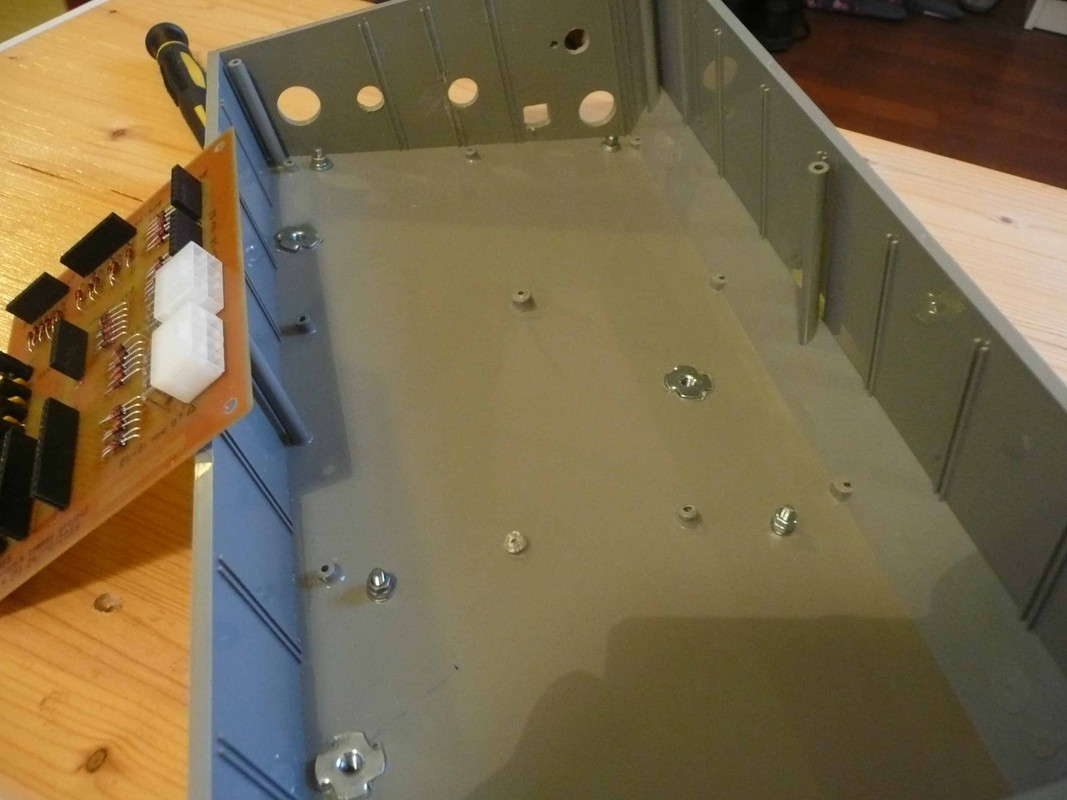
To the lower left is a microphon connector for the Hall sensor in the DIY rudder, above it an encoder (for pitch trim), to the right a 2-way momentary switch (for whatever), a pot (for whatever), and a push button.
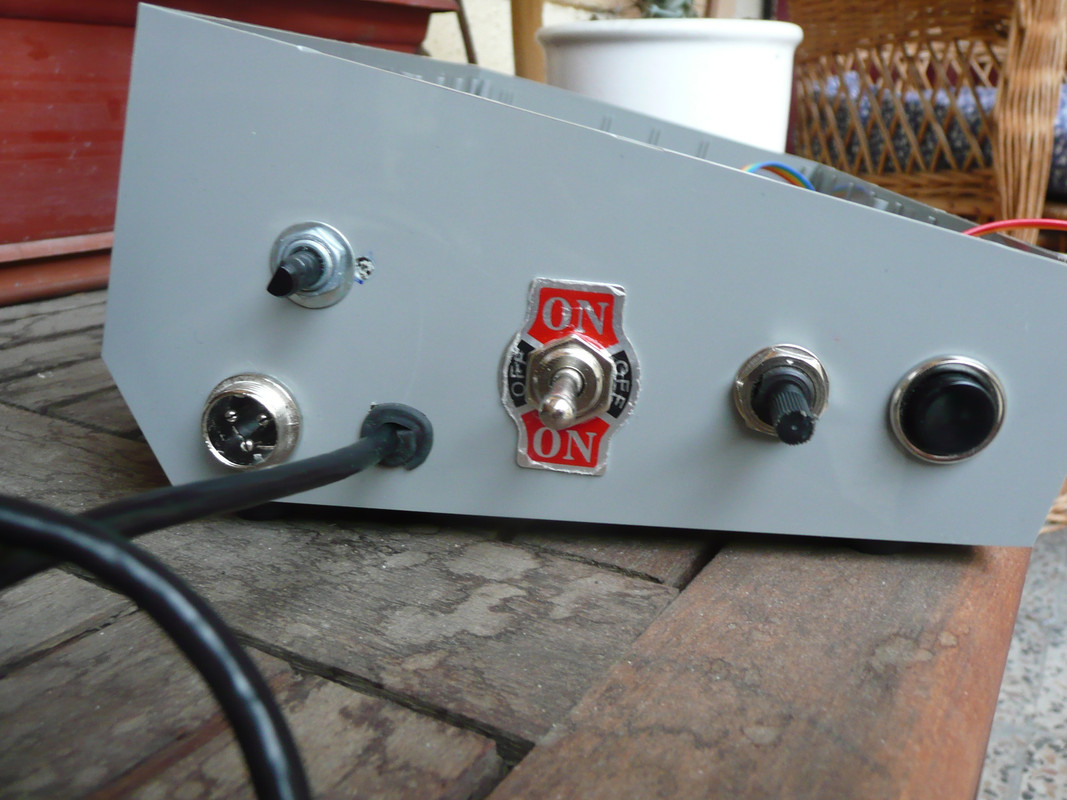
The PCB already inserted, the wiring done, waiting for the rest of the wires to come...
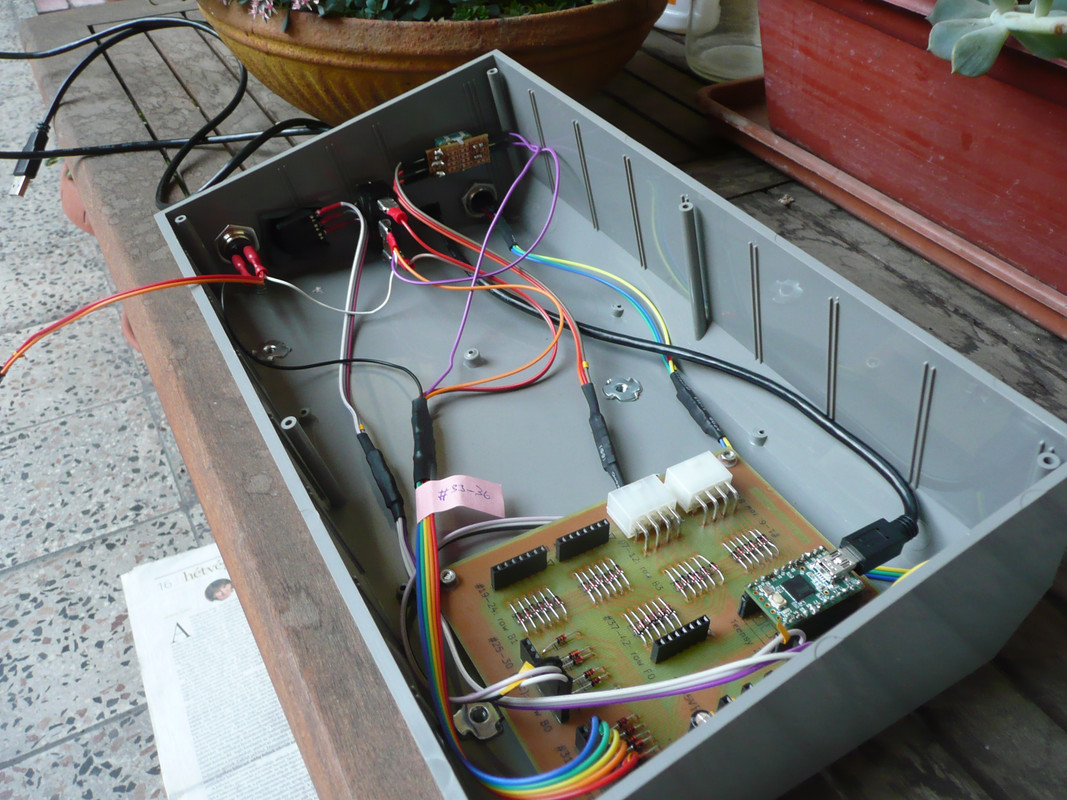
Now let's turn to the cover. Once again I made a 1:1 print-out from FreeCAD...

... and produced this cover-piece. As dampers for the levers I applied cheap black PVC from OBI (10 x 10 mm and 10 x 20 mm L-profile)
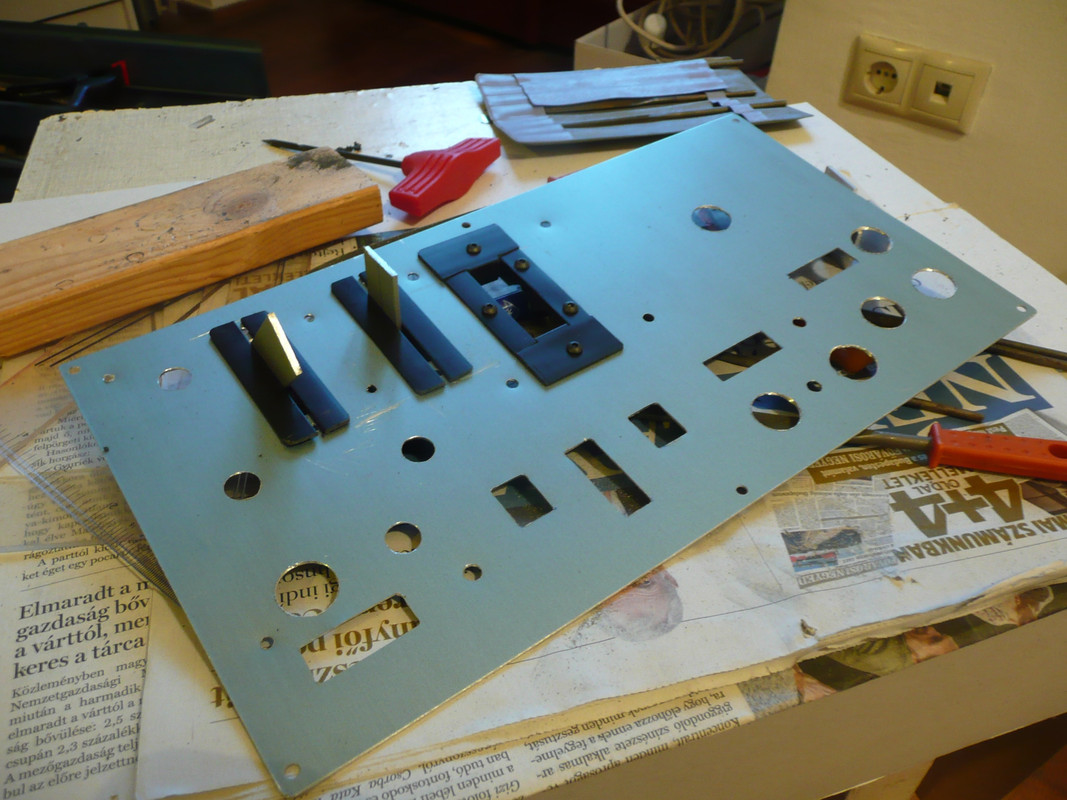
Buttons and switches already inserted:
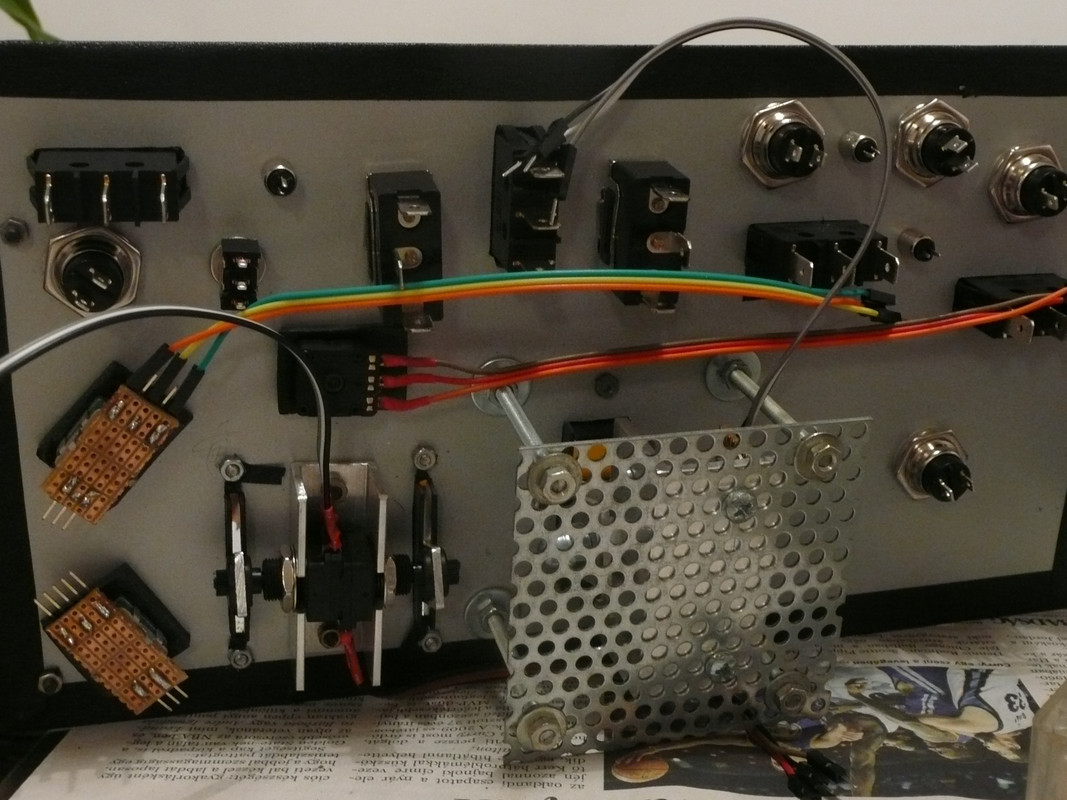
To the lower left two encoders, then two pots with levers, than the mechanics of the throttle grip. The pots:
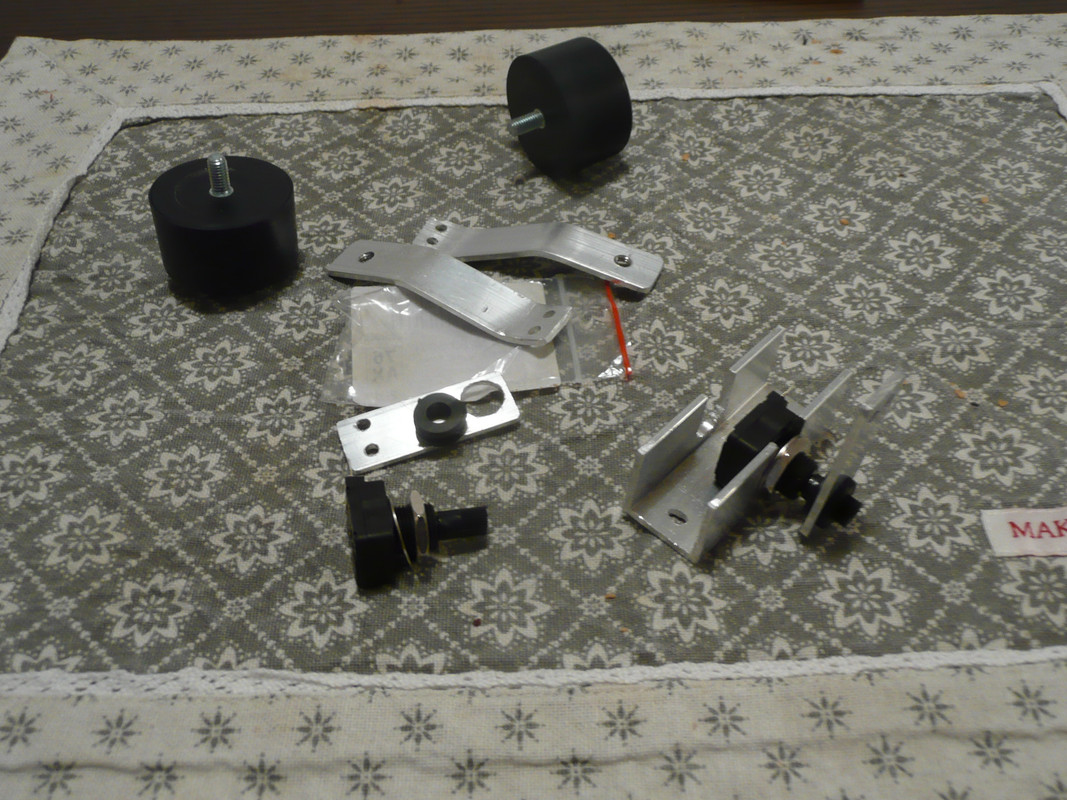
The basic trick is that most pots have a 6 mm diameter shaft, and you can buy rubber grommets with an inner diameter of 6 mm. Take the grommet, pull it onto the shaft, and you'll be able to operate the pot with a lever. If it's tight enough there's no friction.
Here is the throttle mechanics with a Hall sensor. Instead of bearings and dampening, I used nylon washers between levers and the base plate. Resistance can be adjusted by a screw. We'll see how it works out.
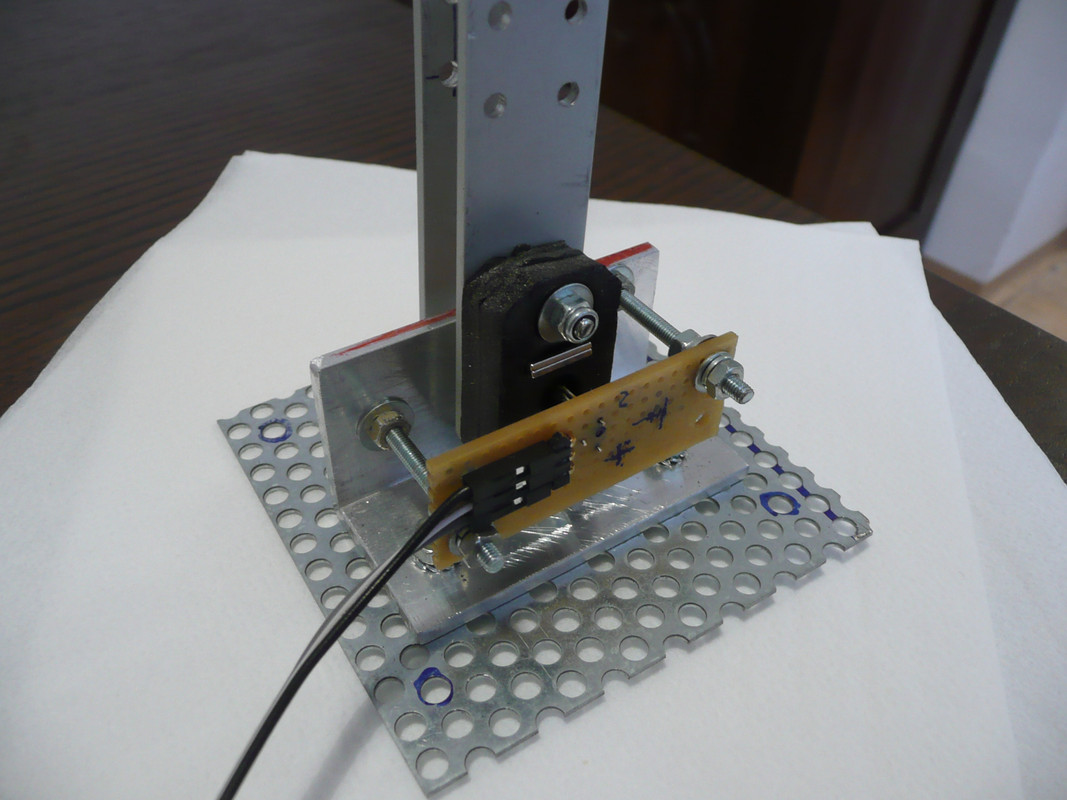
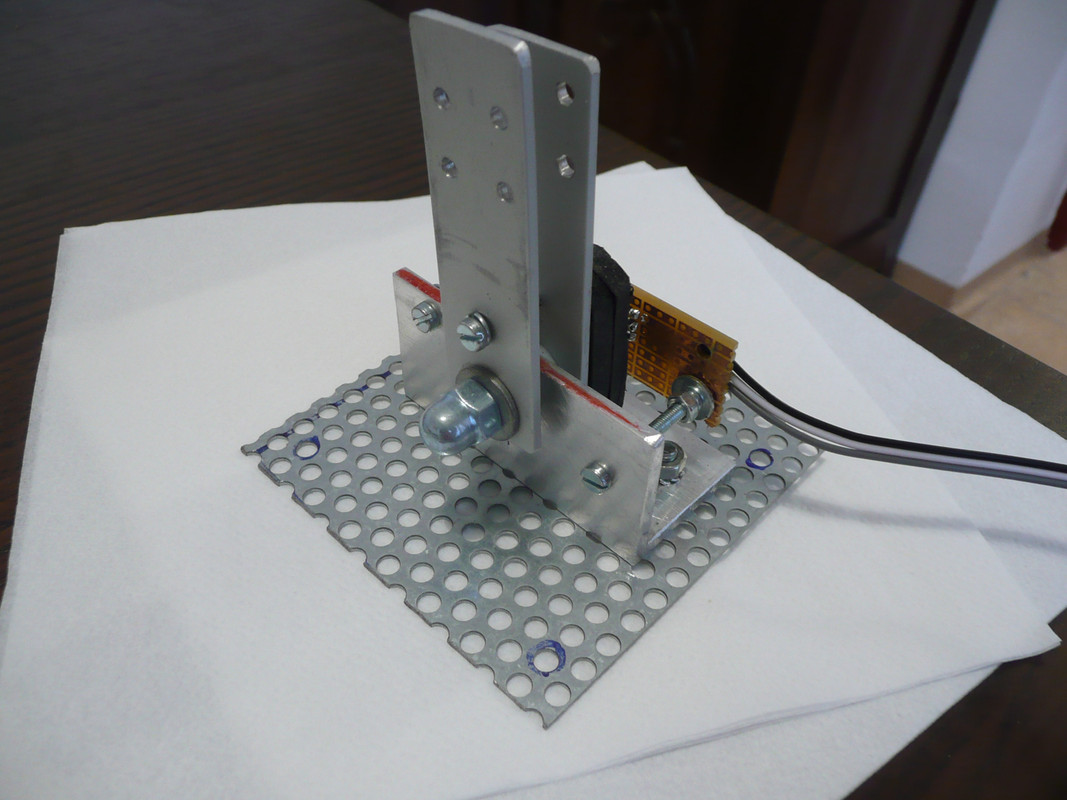
All the wiring done and is ready to be connected to the PCB:
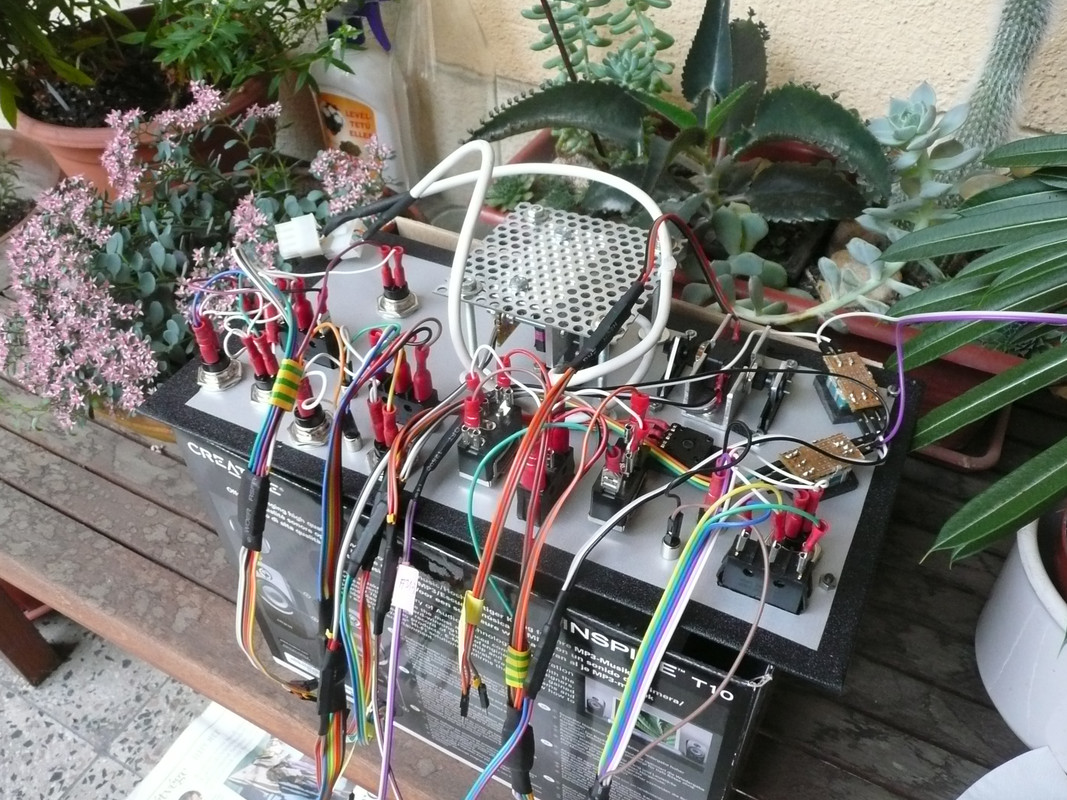
A bit more order in the box. Connecting wires to the PCB:
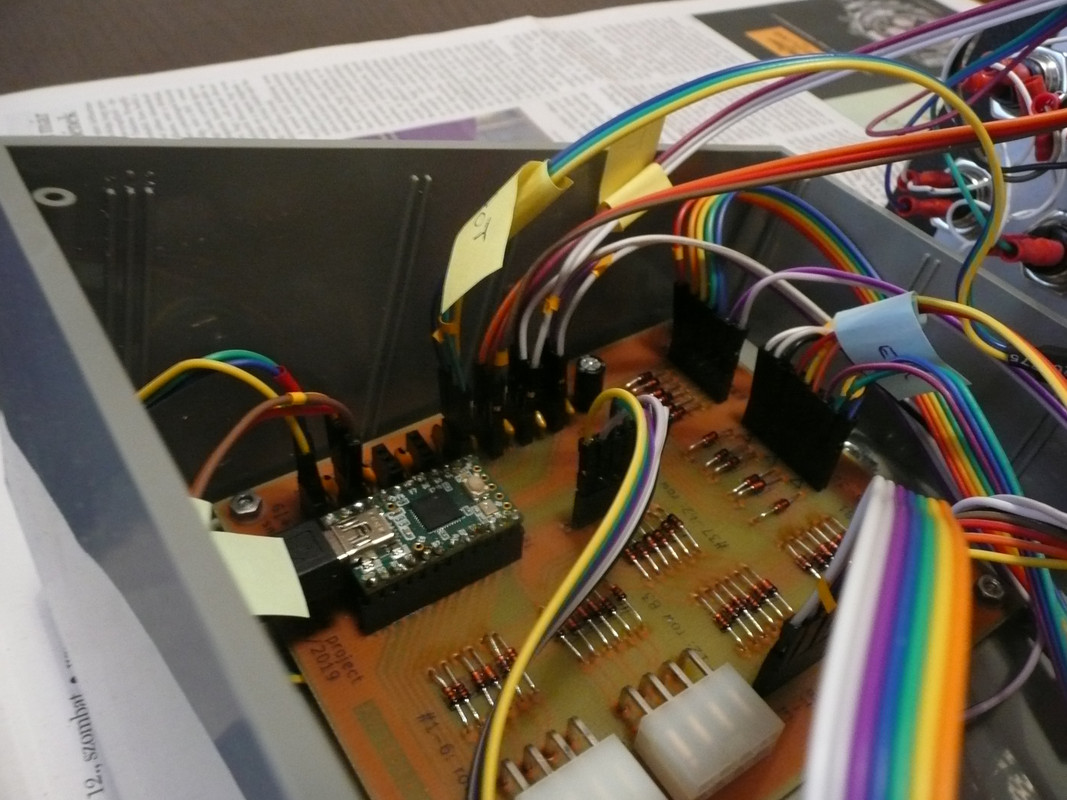
Now you can imagine my facepalm when I realized that I made a button box with 6 more buttons than my PCB is designed for. It's a sad and true fact, but luckily my wife decided not to divorce. This is the end product, still under testing and lacking the knobs etc.
The box fully assembled.
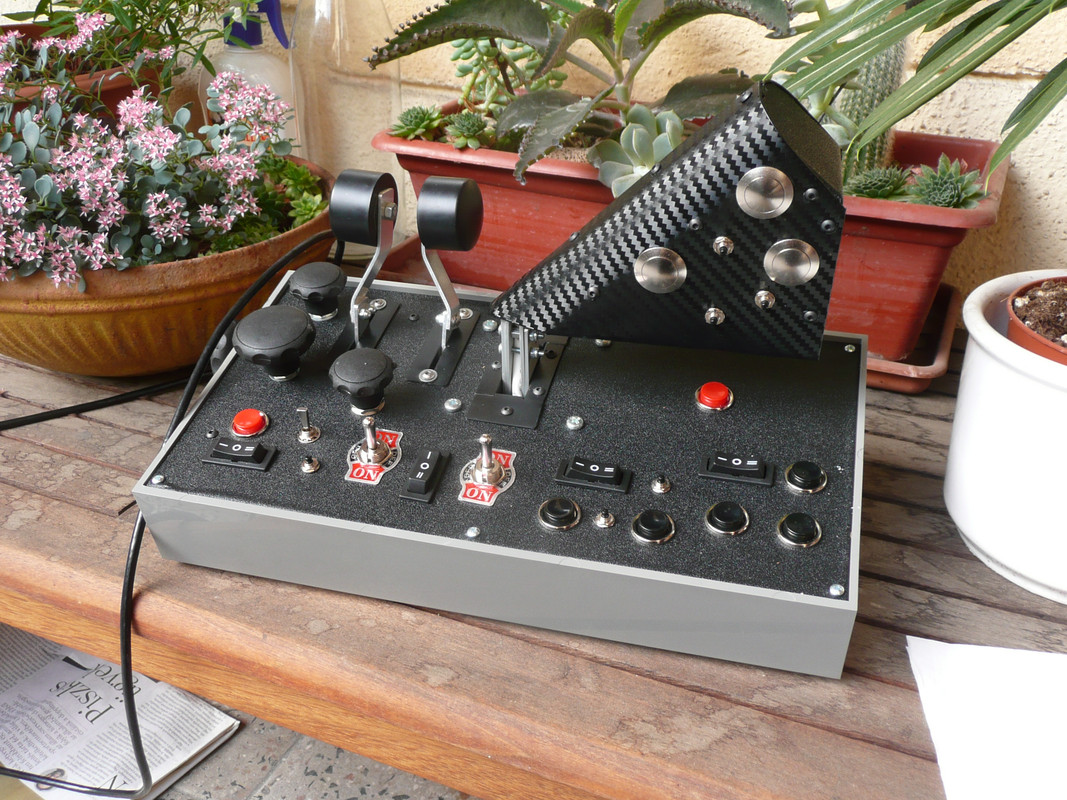
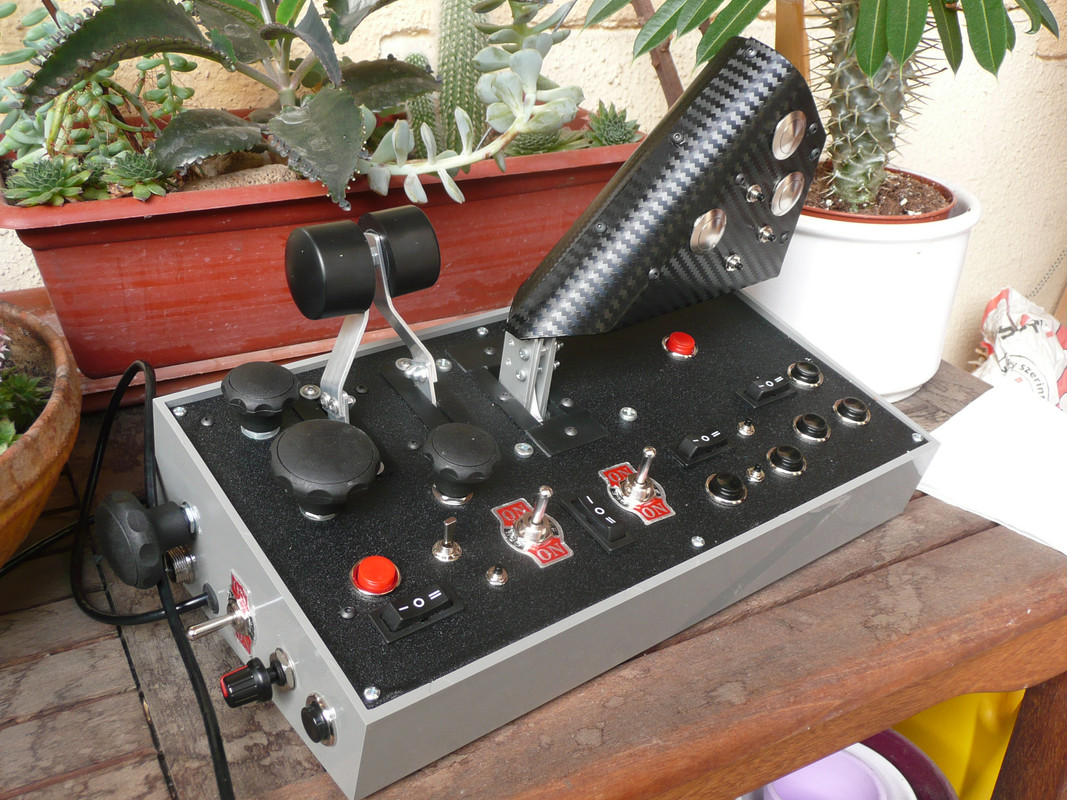
Tonight I made my first full tests and the Teensy flew!!! One of the pots proved to be defective and shall be replaced, and of course the button group to the extreme right is not operational due to my inability to count properly... And some fine-tuning is still needed for the encoders.
Shopping list:
- TEKO 364.8 box (310 x 170 x 90 mm, sloped,
https://www.tme.eu/hu/en/details/364.8/desktop-enclosures/teko/)
- vinyl wrap for the cover plate
- USB cable A to mini-B, 1.8 m
- Allegro 1302KUA-T linear Hall sensor for the throttle (there's another one in the rudder)
- 4 pcs neodymium magnets, 10 x 5 x 1 mm each
- 4 linear pots, 10 kOhm
- 3 rotary encoders (these are fine:
https://www.tme.eu/hu/en/details/pec16-4220f-s0024/incremental-type-encoders/bourns/)
- 12 large push buttons (including those on the throttle grip)
- 8 small push buttons (including those on the throttle grip; these are fine:
https://www.soselectronic.com/products/miyama/ms-402-schwarz-19001)
- 5 pcs (ON)-OFF-(ON) switches with lever (those belonging to this family are fine, the rest are either crap or hard to operate:
https://www.soselectronic.com/products/no-name/kn3b-103a-61641)
- 4 pcs (ON)-OFF-(ON) rocker switches (very hard in feel compared to push buttons)
- various types of connectors and pin-headed jumper wires
- for the throttle mechanics: perforated iron plate, 30 x 30 x 3 mm aluminium L-profile, 20 x 2 aluminium bar, M6 and M3 screws
- for the pots with lever: 20 x 20 x 2 mm aluminium U-profile, 15 x 2 mm aluminium bar, cabinet knobs from IKEA
- as large pot knobs are bloody expensive, I used M6 nut handles instead from a local hardware shop. These are made of 2 plastic parts for an ordinary M6 nut to be inserted, but if you replace the nut with a rubber grommet, it becomes a perfect and very cheap large knob for pots and encoders.

See below my other experiences, remarks, and suggestions.
 Author
Topic: Steampunk is not dead: sniperton's project (Read 3240 times)
Author
Topic: Steampunk is not dead: sniperton's project (Read 3240 times)


